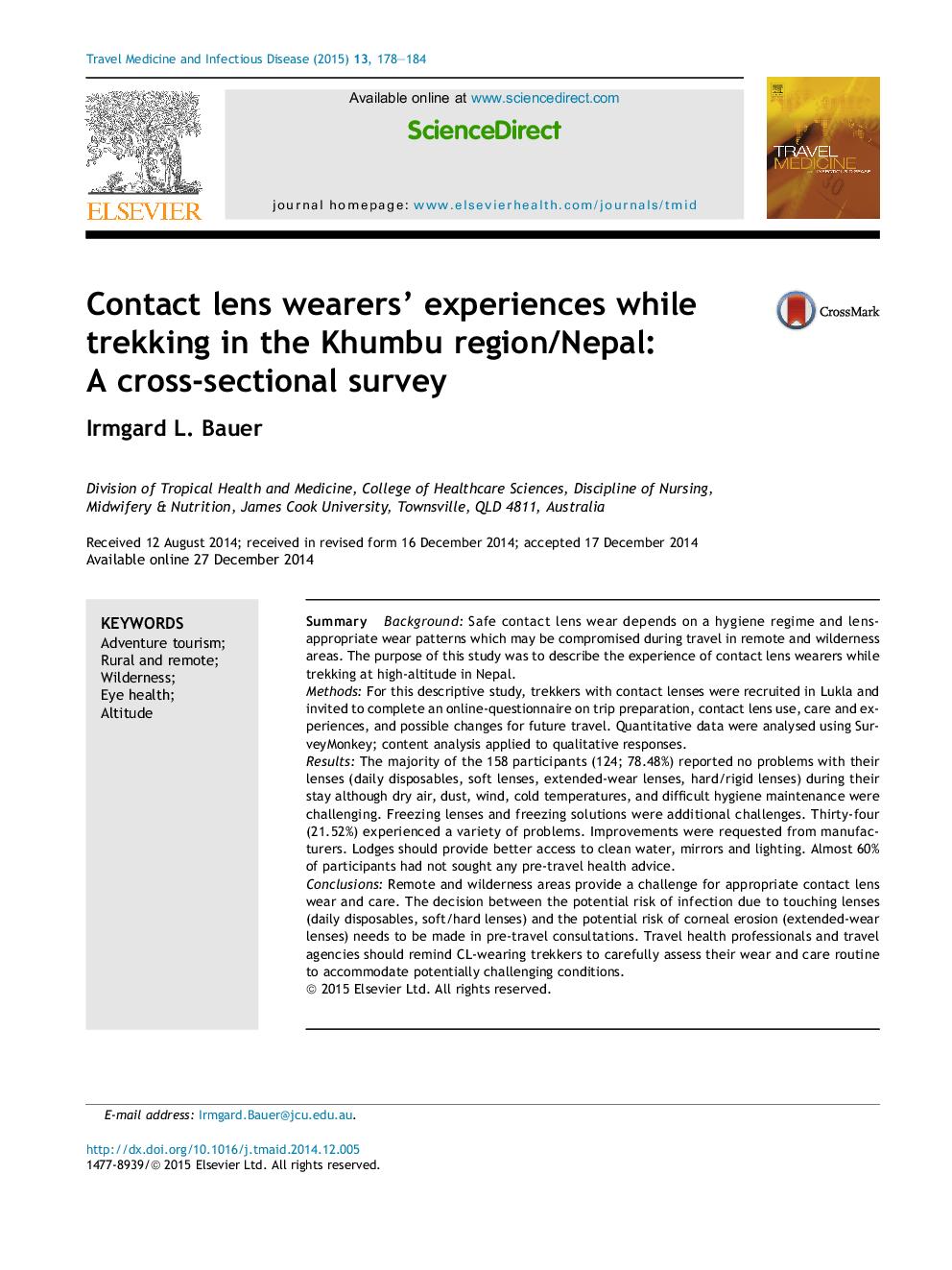| Article ID | Journal | Published Year | Pages | File Type |
|---|---|---|---|---|
| 3392763 | Travel Medicine and Infectious Disease | 2015 | 7 Pages |
SummaryBackgroundSafe contact lens wear depends on a hygiene regime and lens-appropriate wear patterns which may be compromised during travel in remote and wilderness areas. The purpose of this study was to describe the experience of contact lens wearers while trekking at high-altitude in Nepal.MethodsFor this descriptive study, trekkers with contact lenses were recruited in Lukla and invited to complete an online-questionnaire on trip preparation, contact lens use, care and experiences, and possible changes for future travel. Quantitative data were analysed using SurveyMonkey; content analysis applied to qualitative responses.ResultsThe majority of the 158 participants (124; 78.48%) reported no problems with their lenses (daily disposables, soft lenses, extended-wear lenses, hard/rigid lenses) during their stay although dry air, dust, wind, cold temperatures, and difficult hygiene maintenance were challenging. Freezing lenses and freezing solutions were additional challenges. Thirty-four (21.52%) experienced a variety of problems. Improvements were requested from manufacturers. Lodges should provide better access to clean water, mirrors and lighting. Almost 60% of participants had not sought any pre-travel health advice.ConclusionsRemote and wilderness areas provide a challenge for appropriate contact lens wear and care. The decision between the potential risk of infection due to touching lenses (daily disposables, soft/hard lenses) and the potential risk of corneal erosion (extended-wear lenses) needs to be made in pre-travel consultations. Travel health professionals and travel agencies should remind CL-wearing trekkers to carefully assess their wear and care routine to accommodate potentially challenging conditions.
